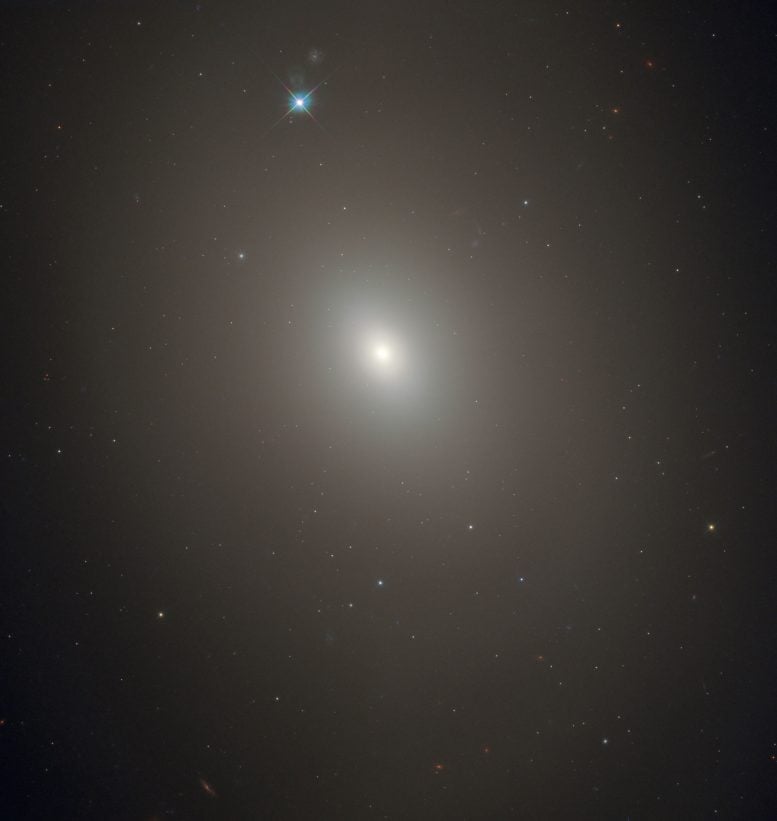
This atmospheric image shows a galaxy named Messier 85, captured in all its delicate, hazy glory by the NASA/ESA Hubble Space Telescope. Messier 85 slants through the constellation of Coma Berenices (Berenice’s Hair), and lies around 50 million light-years from Earth. It was first discovered by Charles Messier’s colleague Pierre Méchain in 1781, and is included in the Messier catalog of celestial objects.
Messier 85 is intriguing — its properties lie somewhere between those of a lenticular and an elliptical galaxy, and it appears to be interacting with two of its neighbors: the beautiful spiral NGC 4394, located out of frame to the upper left, and the small elliptical MCG 3-32-38, located out of frame to the center bottom.
The galaxy contains some 400 billion stars, most of which are very old. However, the central region hosts a population of relatively young stars of just a few billion years in age; these stars are thought to have formed in a late burst of star formation, likely triggered as Messier 85 merged with another galaxy over four billion years ago. Messier 85 has a further potentially strange quality. Almost every galaxy is thought to have a supermassive black hole at its center, but from measurements of the velocities of stars in this galaxy, it is unclear whether Messier 85 contains such a black hole.
This image combines infrared, visible, and ultraviolet observations from Hubble’s Wide Field Camera 3.
Never miss a breakthrough: Join the SciTechDaily newsletter.
2 Comments
I would love to know how the redshift of stars in this galaxy can be measured – surely individual stars can’t be resolved. Can it be done without resolving single star? Perhaps someone in this forum knows?
I am thinking that this galaxy is very ancient indeed and that the reason for its unusual appearance is that its black hole originator has now fizzled out, leaving thw centre core to become becalmed, dispersing material that would otherwise have been too turbulent to trigger stellar formation.
What we see now (IMHO) is effectively the final stages of a galaxy, with young stars emerging from the freshly released material that was trapped around the old black hole and allowing the outer reaches to gently disperse.